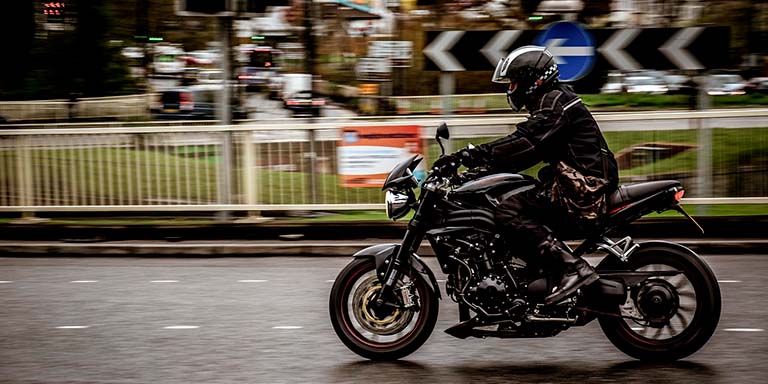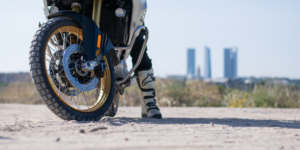When you think of impressive braking, your mind probably conjures up images of a racetrack. But in reality, brakes are just as important in top-level racing as they are in everyday life. This is especially true if we use a bike to get around town. Even if it’s an environment we know well, which we ride in every day, it’s still one in which all kinds of unexpected events can occur, and we have to know how to react in the best possible way.
For many, cities are real jungles. Lots of traffic, combined with the fast pace that often dominates them. Add to that the common distractions that occur every day. It’s a combination of factors that causes more than one scare for motorcyclists, who, as you may well know, are not always easily visible to other road users.
When one of these scares occurs, either because another vehicle crosses our path or a pedestrian appears out of nowhere, an old acquaintance is there to save us: emergency braking. A manoeuvre that, when performed correctly and with brakes in good condition, can prevent a nasty fall. But… How can we be sure we’re performing this manoeuvre in the right way? From NG BRAKES, we would like to help you answer this question.
- As always, it’s essential that the bike is in good condition. With a well-maintained machine and all systems in perfect condition, we can be confident that it will react the way we want it to. You should always make sure the brake discs are in perfect condition and, if they show any signs of deterioration, replace them as soon as possible.
- Know your bike. It’s important that you’re familiar with your bike and that you practice braking in a safe area without traffic, such as a road safety circuit, an empty car park, etc.
- Use the rear brake in combination with the front brake. In emergency braking, in town or out of town, do not leave all the responsibility to the front brake, as the wheel could lock up and you could crash.
- As always, practice preventive driving. Be aware of your surroundings, keep a safe distance from other vehicles and avoid braking on slippery surfaces such as road signs or drains.







